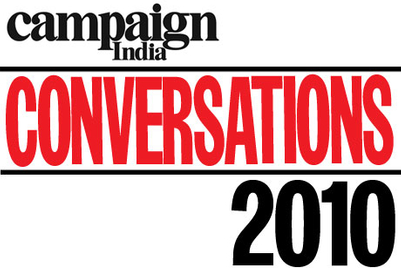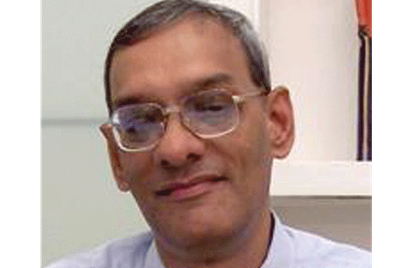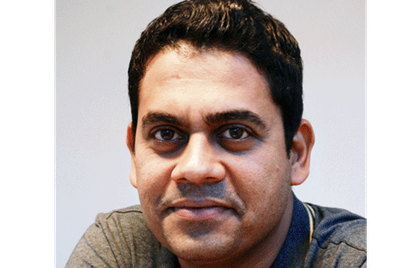
We don’t appreciate the benefits we enjoy
And most critical of all, how are we managing and building our people? The HR function within Agencies is virtually non-existent, says Charles Cadell
Indian advertising continues to live its Golden Age and let’s be thankful for it. Waiting in the wings are realities that continue to decimate the industry overseas and I am not convinced our industry fully appreciates the benefits we currently enjoy or some of the stresses that will shortly come. As a consequence of this, we are frittering the opportunity of time that will either prevent, or stave off the precipitous decline in stature that the industry in the rest of the world has had to endure.
The Good
The good in Indian advertising is truly exceptional and we practice our craft in one of the best markets in the world.
From an already significant base, not only are we in one of the fastest growing markets, but we are in one that encourages business development within the industry with very limited political, bureaucratic or legislative interference. Our market is free and (largely) fair.
We are still a respected profession. Mothers and Fathers are happy to see their sons and daughters sign up to a job that still (thankfully) has glamourous associations. Where else in the world are the acting elite so thoroughly integrated into the business and where else can you find two weekly TV programmes and endless weekly news articles dedicated to the profession?
We still make respectable profits and so can more easily control our destiny and our product. Creativity and quality are not yet at the mercy of a client’s Procurement department.
We still retain strong client/ agency relationships based on trust and respect. Our senior management can still command a time and place at the client’s boardroom table and have not yet been supplanted by the management consultants. Regular pitching clients are an anathema and rarity – that global average tenure of three years per relationship has no holding here.
But best of all, because of the state of the media market and TV’s dominance of it, we still have a little time to try to retain such benefits.The immensely painful forced Agency transition into integration, digitization and the respect for the skills and benefits of our marketing services colleagues (and one that has been almost wholly unsuccessful to date) is not yet a business mandate for our daily survival. It soon will be.
The Bad
As Indian brands go international and as more global agency brands and boutiques come to India, we must be ready for global norms to impact. I think we are ill-prepared.
To wit, some questions that might be keeping industry leaders awake at night: How are we preparing our agencies for Procurement and industry consultants who will soon start interrogating our costs using global benchmarks? How seriously are we investing in our analytics to measure ourselves against the results of our work versus dubious creative accolades? How ready are we for that digital explosion we know is coming? How are we revamping our production systems in preparation for clients that will shortly demonstrate its commoditization and rip it out of the creative agencies (along with the nice margin it brings)?
And most critical of all, how are we managing and building our people? The 2010 Industry survey by Deloitte demonstrated how far we have to go. Deloitte themselves pronounce they have seen no other Indian vertical like it. The HR function within Agencies is virtually non-existent; title inflation is endemic and the abundant job titles and levels have little relevance to function or role. We are still intensely hierarchical and length of service rather than raw talent determines promotions. With all this, it is hard for the brightest to breathe.
Meanwhile, as the remuneration we can afford for the country’s brightest young marketing talent continues to shrink relative to our largest clients, it is imperative we widen our recruiting net and focus on training to ensure we remain on an intellectual parity with such clients. We are doing not nearly enough of either. Diversity in our talent pool is the life-blood of our business yet we still tend to recruit to type and rote.
Diversity comes in all forms. I believe, for example, that it is a very poor indictment on the industry that I remain the only foreign management executive serving in it – and only the second foreign CEO in recent memory. In my last straw poll of expats in the business in India 2009, I counted, across all disciplines and levels, a total of seven non-Indian nationals in our entire industry. Seven! No comparably sized market in the world comes close. On top of this, it is also famously hard for highly qualified returning NRIs to break back into the top of our profession. Like it or not, this limited international exposure has consequences.
Even for those who get close to the top - it can be difficult to go all the way. I know of no other country that has had their industry so heavily dominated by such an unchanging (and male) leadership few. Title inflation can only go so far. If the bright talent at the second level can’t move up, they will move out - and we sorely need that fresh blood.
The Ugly
It is sad to say that some of the worst aspects of our business are almost entirely self-inflicted and derive from the single fact that we are amorphous. There is little unity in our profession. Instead, we have factions, some significant egos, an overload of politics and sadly, some behaviours that lack integrity. All these are driven by short-sighted in-fighting – we seem to believe that our threat is the next Agency as opposed to the next vertical.
These might be some examples:
It borders on the masochistic that, without taking corrective action, we continue to indulge in the Goafest farce that is annually exposed in the media and so open to ridicule by our clients.
It is derisible that we cannot conform to our own rules or set them hoping the industry colleagues will follow – be it pitching fees or a ‘united front of no’ against clients who have defaulted on our colleagues.
It is humiliating when we allow our profession to be divided and cheapened in the chase of the quick buck. We have recently witnessed reputed names undercut others to secure business which sets poor precedent and demeans the profession.
And it is entirely self-defeating that the industry body has refused to talk about any other form of remuneration outside the 15% commission.
It is sad that we are so passive and retroactive. Instead of preparing our industry for what is to come, our energies are spent on churning the basics of yesteryear. We must now act decisively and fast. One mantra would help enormously: United we stand, divided we fall.
It is inevitable that when talking about industry issues, the source of resolution for them lies squarely at the door of the industry body that leads us and the members that constitute that body.
The 3A’s of India must lead with decisiveness and strength of purpose that is driven from principle. Political compromise is killing us. I feel, however, they need help to do so and it should come from the men who are capable of putting the interests of our profession above their own agencies. Balki, Piyush and Prasoon, as the lead practitioners of our craft, you can help the industry enormously by stepping forward with aligned and open perspectives and solutions on some of the biggest creative issues facing the industry.
May we start with sorting Goafest please?


.jpg&h=334&w=500&q=100&v=20250320&c=1)
.jpg&h=334&w=500&q=100&v=20250320&c=1)
.jpg&h=334&w=500&q=100&v=20250320&c=1)




.jpg&h=334&w=500&q=100&v=20250320&c=1)







.jpg&h=268&w=401&q=100&v=20250320&c=1)


